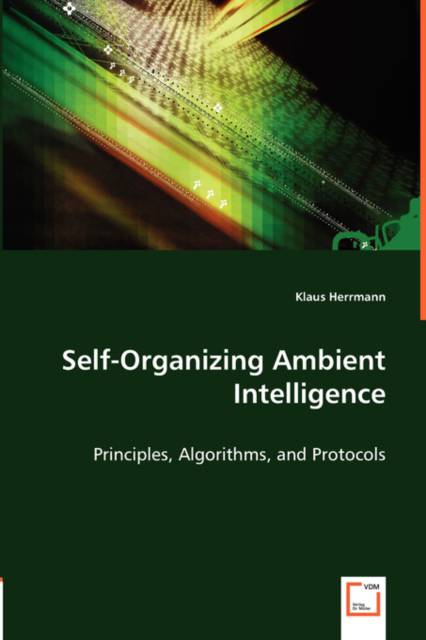
- Afhalen na 1 uur in een winkel met voorraad
- Gratis thuislevering in België vanaf € 30
- Ruim aanbod met 7 miljoen producten
- Afhalen na 1 uur in een winkel met voorraad
- Gratis thuislevering in België vanaf € 30
- Ruim aanbod met 7 miljoen producten
Zoeken
Self-Organizing Ambient Intelligence
Principles, Algorithms, and Protocols
Klaus Herrmann
Paperback | Engels
€ 77,95
+ 155 punten
Omschrijving
Ambient intelligence (AmI) is a new research area in computer science that shall enable human users to interact with their physical environment seamlessly. The ultimate vision is that users are embedded in AmI environments that adapt to them and provide services without putting the burden of manual configuration and explicit interaction on them. This book is dedicated to the question of how this vision can be realized. We propose a model, called Ad-hoc Service Grid (ASG), for deploying AmI in arbitrary locations. An ASG consists of PC-like computers that are distributed over a location in a Drop-and-Deploy fashion and provide a communication network as well as computing resources. We present an ensemble of different software technologies that can build the foundation for future ASG-based Ambient Intelligence systems. They enable the ASG to self-organize in order to adapt to dynamic user behavior. This book is addressed to engineers, scientists, and students who do research in the area of AmI. It provides deep insights into AmI technologies and puts them into perspective. Moreover, this book takes a step towards a common understanding of self-organizing software systems in general.
Specificaties
Betrokkenen
- Auteur(s):
- Uitgeverij:
Inhoud
- Aantal bladzijden:
- 276
- Taal:
- Engels
Eigenschappen
- Productcode (EAN):
- 9783836498968
- Verschijningsdatum:
- 10/04/2008
- Uitvoering:
- Paperback
- Formaat:
- Trade paperback (VS)
- Afmetingen:
- 152 mm x 229 mm
- Gewicht:
- 371 g

Alleen bij Standaard Boekhandel
+ 155 punten op je klantenkaart van Standaard Boekhandel
Beoordelingen
We publiceren alleen reviews die voldoen aan de voorwaarden voor reviews. Bekijk onze voorwaarden voor reviews.











